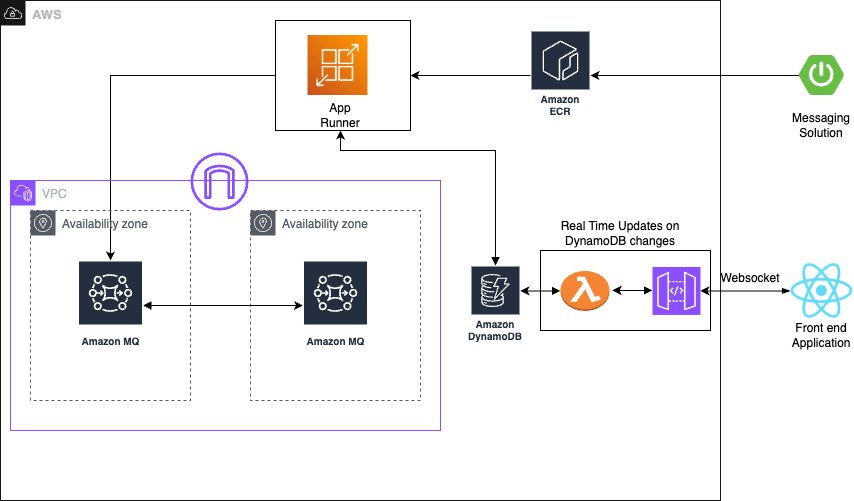AWS Architecture Blog
Category: Messaging
Build priority-based message processing with Amazon MQ and AWS App Runner
In this post, we show you how to build a priority-based message processing system using Amazon MQ for priority queuing, Amazon DynamoDB for data persistence, and AWS App Runner for serverless compute. We demonstrate how to implement application-level delays that high-priority messages can bypass, create real-time UIs with WebSocket connections, and configure dual-layer retry mechanisms for maximum reliability.
Training a call center fraud detection model for IVR calls with Amazon SageMaker Canvas
This blog post will show you how to use the power of ML to build a fraud-detection model using Amazon SageMaker Canvas, a no-code/low-code ML service that business analysts and domain experts can use to build, train, and deploy ML models without requiring extensive ML expertise.
WellRight modernizes to an event-driven architecture to manage bursty and unpredictable traffic
In this post, we share how WellRight optimized the cost and performance of their application through a ground-up modernization to an event-driven architecture.
Create a serverless custom retry mechanism for stateless queue consumers
In this post, we propose a solution that handles serverless retries when the workflow’s state isn’t managed by an additional service.
How Nielsen uses serverless concepts on Amazon EKS for big data processing with Spark workloads
In this post, we follow Nielsen’s journey to build a robust and scalable architecture while enjoying linear scaling. We start by examining the initial challenges Nielsen faced and the root causes behind these issues. Then, we explore Nielsen’s solution: running Spark on Amazon Elastic Kubernetes Service (Amazon EKS) while adopting serverless concepts.
Efficient satellite imagery supply with AWS Serverless at BASF Digital Farming GmbH
BASF Digital Farming’s mission is to support farmers worldwide with cutting-edge digital agronomic decision advice by using its main crop optimization platform, xarvio FIELD MANAGER. This necessitates providing the most recent satellite imagery available as quickly as possible. This blog post describes the serverless architecture developed by BASF Digital Farming for efficiently downloading and supplying […]
Channel deflection from voice to chat using Amazon Connect
This post was co-written with Sagar Bedmutha, senior solutions architect at Tata Consultancy Services, and Rajiya Patan, AWS developer at Tata Consultancy Services Service excellence helps cultivate customer satisfaction and brand loyalty. According to Gartner, one service excellence challenge is long wait times on interactive voice response (IVR) systems. Long wait times can translate into […]
How CyberArk is streamlining serverless governance by codifying architectural blueprints
This post was co-written with Ran Isenberg, Principal Software Architect at CyberArk and an AWS Serverless Hero. Serverless architectures enable agility and simplified cloud resource management. Organizations embracing serverless architectures build robust, distributed cloud applications. As organizations grow and the number of development teams increases, maintaining architectural consistency, standardization, and governance across projects becomes crucial. […]
How Wesfarmers Health implemented upstream event buffering using Amazon SQS FIFO
Customers of all sizes and industries use Software-as-a-Service (SaaS) applications to host their workloads. Most SaaS solutions take care of maintenance and upgrades of the application for you, and get you up and running in a relatively short timeframe. Why spend time, money, and your precious resources to build and maintain applications when this could […]
Top Architecture Blog Posts of 2023
2023 was a rollercoaster year in tech, and we at the AWS Architecture Blog feel so fortunate to have shared in the excitement. As we move into 2024 and all of the new technologies we could see, we want to take a moment to highlight the brightest stars from 2023. As always, thanks to our […]









